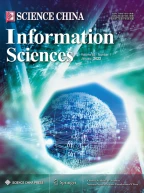131Accesses
Abstract
Sparse microwave imaging radar is a newly developed concept of microwave imaging system, which tries to combine the traditional radar imaging system with sparse signal processing theories, achieving the aim of reducing the complexity of microwave imaging systems and enhancing the system performance. In this paper, we introduce some basic concepts of sparse signal processing theory, and then apply it to the traditional radar imaging system to get the mathematical model of sparse microwave imaging system. We analyze the factors that determine the performance of sparse microwave imaging radar, including scene, waveform and platform. According to the radar model, we analyze how these factors influence the radar system and how to optimize them. Simulation results of the sparse microwave imaging radar system are also provided.
This is a preview of subscription content,log in via an institution to check access.
Access this article
Subscribe and save
- Get 10 units per month
- Download Article/Chapter or eBook
- 1 Unit = 1 Article or 1 Chapter
- Cancel anytime
Buy Now
Price includes VAT (Japan)
Instant access to the full article PDF.
Similar content being viewed by others
References
Donoho D L. Compressed sensing. IEEE Trans Inf Theory, 2006, 52: 1289–1306
Candès E J, Tao T. Near-optimal signal recovery from random projections: Universal encoding strategies. IEEE Tran Inf Theory, 2006, 52: 5406–5425
Candès E J, Romberg J, Tao T. Stable signal recovery form incomplete and inaccurate measurements. Comm Pure Appl Math, 2006, 59: 1207–1223
Candès E J, Romberg J. Sparsity and incoherence in compressive sampling. Inver Prob, 2007, 23: 969–985
Candès E J, Wakin M. An introduction to compressive sampling. IEEE Signal Process Mag, 2008, 25: 21–30
Foucart S, Lai M J. Sparsest solutions of underdetermined linear systems viaℓq-minimization for 0 <q ⩽ 1. Appl Comput Harmon Analys, 2009, 26: 395–407
Baraniuk R G, Steeghs P. Compressive radar imaging. In: Proceedings of IEEE Radar Conference, Boston, MA, 2007. 128–133
Patel V M, Easley G R, Healy D M Jr, et al. Compressed synthetic aperture radar. IEEE J Sel Top Signal Process, 2010, 4: 244–254
Ender J H G. On compressive sensing applied to radar. Signal Process, 2010, 90: 1402–1414
Herman M A, Strohmer T. High-resolution radar via compressed sensing. IEEE Trans Signal Process, 2009, 57: 2275–2284
Alonso M T, López-Dekker P, Mallorquí J J. A novel strategy for radar imaging based on compressive sensing. IEEE Trans Geosc Remote Sens, 2010, 48: 4285–4295
Berger C R, Zhou S, Willett P. Signal extraction using compressed sensing for passive radar with OFDM signals. In: Proceedings of 11th International Conference on Information Fusion, Colugue, 2008. 1–6
Bahai A R S, Saltzberg B R. Multi-Carrier Digital Communications—Theory and Applications of OFDM. New York: Kluwer Academic/Plenum Publishers, 1999
Tropp J A, Laska J N, Duarte M F, et al. Beyond Nyquist: Efficient sampling of sparse bandlimited signals. IEEE Trans Inf Theory, 2010, 56: 520–544
Tropp J A, Wright S J. Computational methods for sparse solution of linear inverse problems. CalTech ACM Technical Report, No. 2009-1. 2009
Bredies K, Lorenz D A. Linear convergence of iterative soft-thresholding. J Fourier Analys Appl, 2008, 14: 813–837
Daubechies I, Defriese M, De Mol C. An iterative thresholding algorithm for linear inverse problems with a sparsity constraint. Commun Pure Appl Math, 2004, 57: 1413–1457
Candès E J, Tao T. Decoding by linear programming. IEEE Trans Inf Theory, 2005, 51: 4203–4215
Ben-Haim Z, Eldar Y C, Elad M. Coherence-based performance guarantees for estimating a sparse vector under random noise. IEEE Trans Signal Process, 2010, 58: 5030–5043
Carrara W G, Goodman R S, Majewski R M. Spotlight Synthetic Aperture Radar: Signal Processing Algorithms. MA: Artech House Inc, 1995
Jakowatz C V Jr, Wahl D E, Eichel P H, et al. Spotlight-Mode Synthetic Aperture Radar: A Signal Processing Approach. MA: Kluwer Academic Publishers, 1996
Cumming I G, Wong F H. Digital Processing of Synthetic Aperture Radar: Algorithms and Implementation. MA: Artech House Inc, 2005
Jiang H. Study on processing algorithm and analysis of imaging performance of compressed sensing radar via information theory model. Master Thesis. Beijing: Graduate University, Chinese Academy of Sciences. 2011
Jiang H, Zhang B C, Lin Y G, et al. Random noise SAR based on compressed sensing. In: Proceeding of IGARSS, Hawaii, 2010. 4624–4627
Donoho D L, Tanner J. Precise undersampling theorems. Proceedings of the IEEE, 2010, 98: 913–924
Author information
Authors and Affiliations
Science and Technology on Microwave Imaging Laboratory, Beijing, 100190, China
Zhe Zhang, BingChen Zhang, ChengLong Jiang, Yin Xiang, Wen Hong & YiRong Wu
Institute of Electronics, Chinese Academy of Sciences, Beijing, 100190, China
Zhe Zhang, BingChen Zhang, ChengLong Jiang, Yin Xiang, Wen Hong & YiRong Wu
Graduate University, Chinese Academy of Sciences, Beijing, 100190, China
Zhe Zhang & ChengLong Jiang
- Zhe Zhang
You can also search for this author inPubMed Google Scholar
- BingChen Zhang
You can also search for this author inPubMed Google Scholar
- ChengLong Jiang
You can also search for this author inPubMed Google Scholar
- Yin Xiang
You can also search for this author inPubMed Google Scholar
- Wen Hong
You can also search for this author inPubMed Google Scholar
- YiRong Wu
You can also search for this author inPubMed Google Scholar
Corresponding author
Correspondence toZhe Zhang.
Rights and permissions
About this article
Cite this article
Zhang, Z., Zhang, B., Jiang, C.et al. Influence factors of sparse microwave imaging radar system performance: approaches to waveform design and platform motion analysis.Sci. China Inf. Sci.55, 2301–2317 (2012). https://doi.org/10.1007/s11432-012-4603-x
Received:
Accepted:
Published:
Issue Date:
Share this article
Anyone you share the following link with will be able to read this content:
Sorry, a shareable link is not currently available for this article.
Provided by the Springer Nature SharedIt content-sharing initiative


